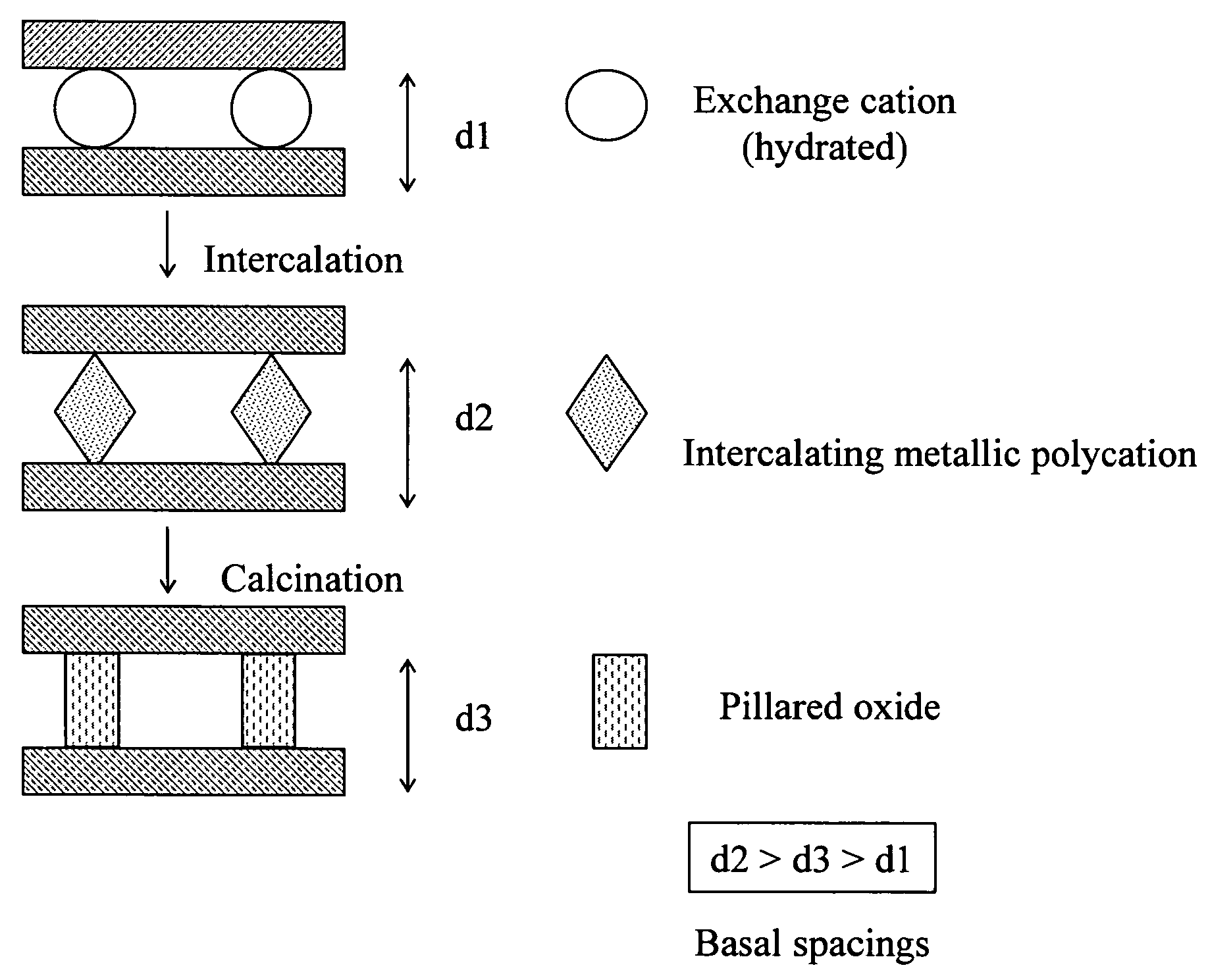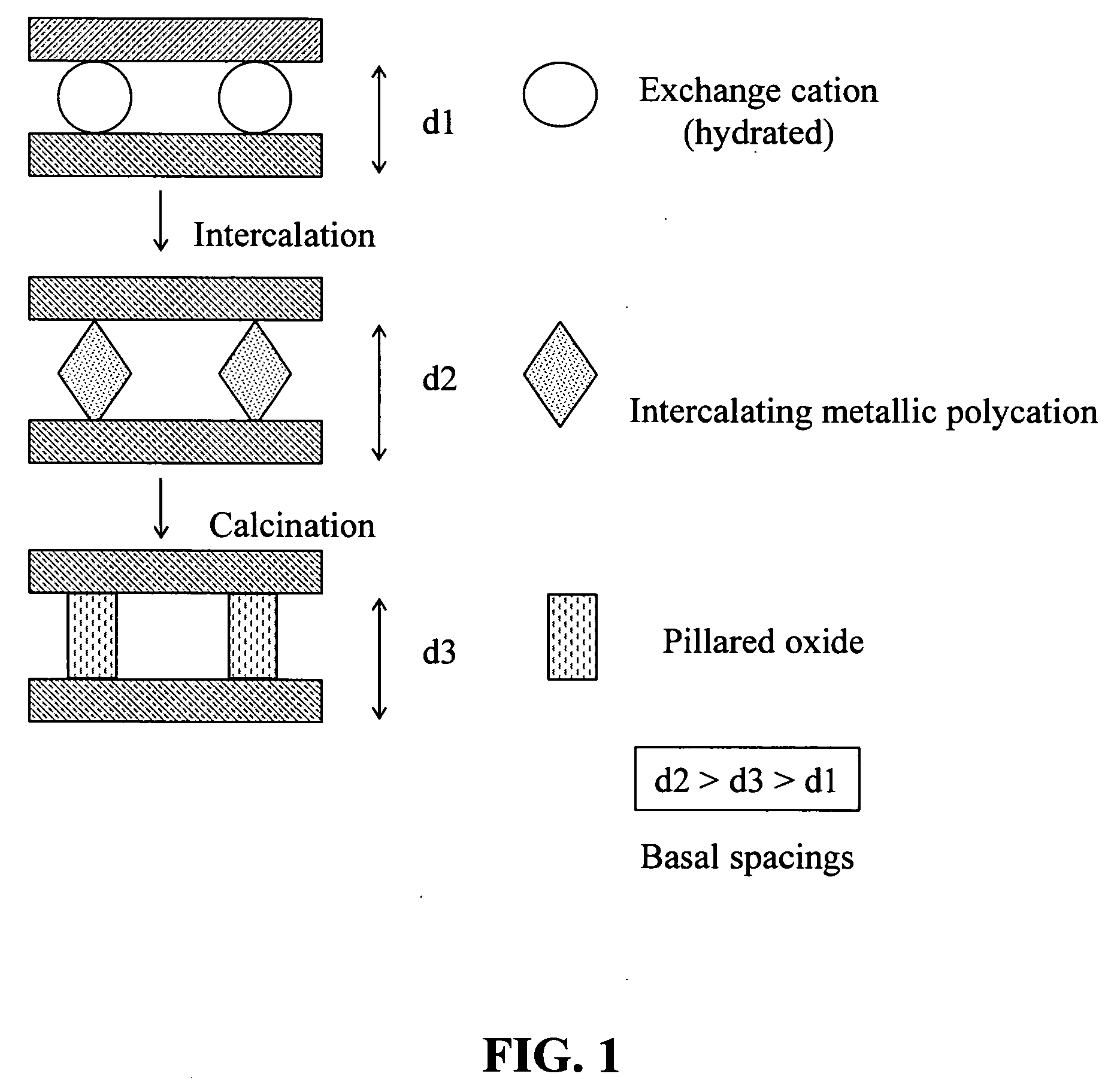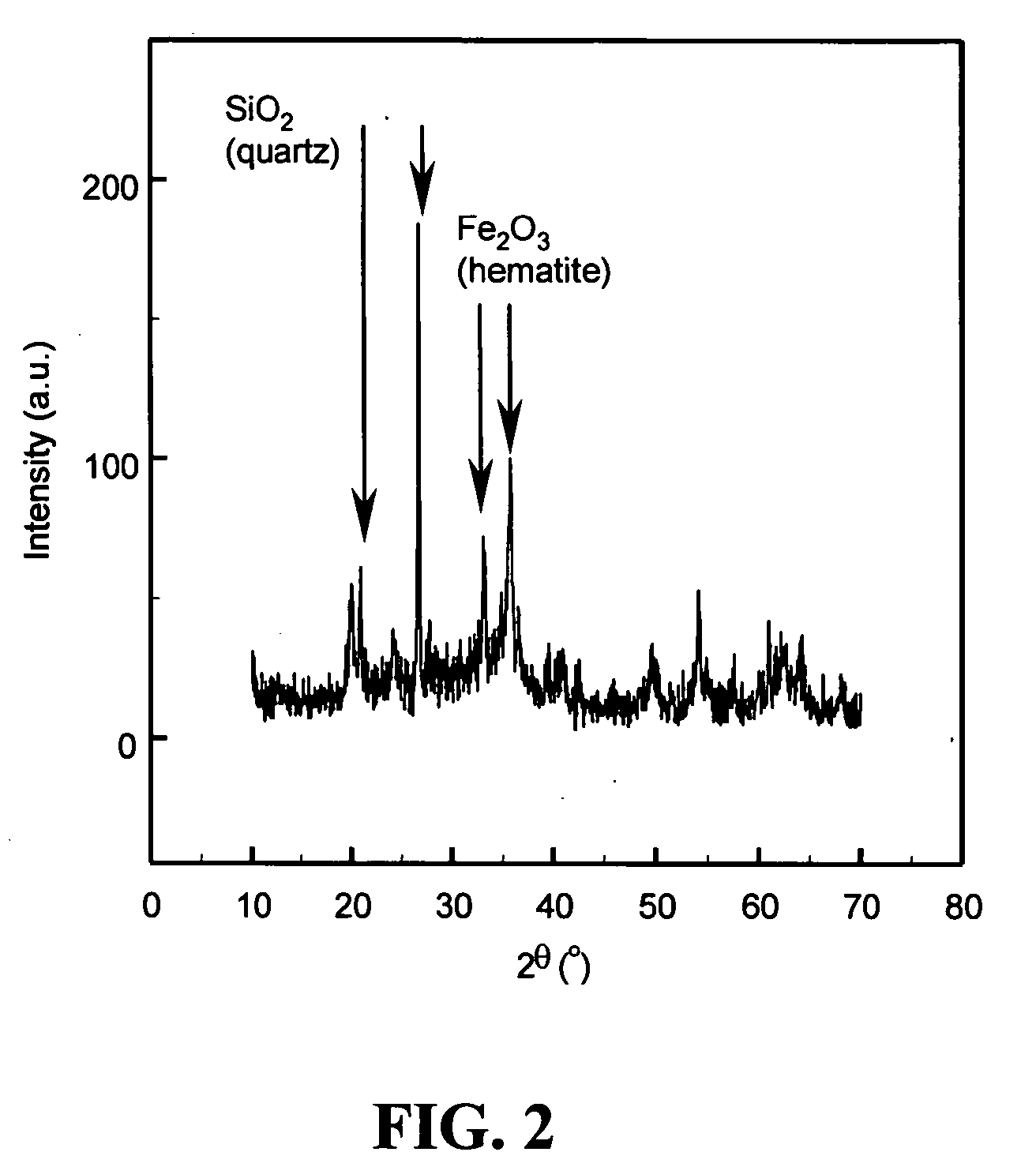Synthesis of bentonite clay-based iron nanocomposite and its use as a heterogeneous photo fenton catalyst
a technology of photo fenton and nanocomposite, which is applied in the direction of physical/chemical process catalyst, separation process, filtration separation, etc., can solve the problems of azo dyes that are toxic to plants, animals, humans, and other animals, and achieve the effect of reducing the cost of sludge containing fe ions at the end of wastewater treatment, and reducing the cost of sludge removal
- Summary
- Abstract
- Description
- Claims
- Application Information
AI Technical Summary
Benefits of technology
Problems solved by technology
Method used
Image
Examples
example 1
Synthesis of Fe—Bentonite Nanocomposite
[0053] The Fe—B nanocomposite was prepared through the following steps: [0054] (a) An aqueous dispersion of bentonite clay was prepared by adding 10 g bentonite clay to 500 ml H2O under vigorous stirring for 3 hours at room temperature. The bentonite clay was obtained from Integrated Mineral Technology Ltd, Australia. [0055] (b) Sodium carbonate Na2CO3 was added slowly as a powder into a vigorously stirred 0.2 M solution of iron nitrate for 3 hours such that a molar ratio of 1:1 for [Na+] / [Fe3+] was established. Na2CO3 and Fe3(NO3)3.9H2O were purchased from Aldrich. [0056] (c) 500 ml solution obtained from the step (b) was then added drop-wise into the dispersion of bentonite clay prepared in the first step, under vigorous stirring. [0057] (d) The suspension was stirred for 3 hours followed by aging at 100° C. in an autoclave for 48 hours. The precipitate was recovered from the mixture by centrifuging, and then washed with deionized water to r...
example 2
Fe—B Nanocomposite As A Heterogeneous Photo Fenton Catalyst In the Discoloration And Mineralization of Azo Dye Orange II At An Optimal Initial Solution PH of 3.0
[0060] The model pollutant for the evaluation of Fe—B catalyst is an azo-dye, Orange II, a non-biodegradable dye widely used in textile industry. Thus, it is a suitable model pollutant. The Orange II was available from Acros Organics, USA. The photo-Fenton discoloration and minerlization of Orange II was performed in a photo reactor 10, as shown in FIG. 3. It is cylindrical with a UVC lamp 12 (Philips 8 W 254 nm) inserted in a quality table 14 the center.
[0061] A stirring bar 16 driven by an electromagnetic stirrer 18 vigorously stirs the reaction solution 20. A water jacket 22 through which water enters 24 and exits 26 cools (or possible warms) the reaction solution 20 as needed. The total volume of Orange II solution was 0.5 liter and the initial Orange II concentration used was fixed at 0.2 mM except otherwise specified...
example 3
Fe—B Nanocomposite As A Heterogeneous Photo Fenton Catalyst In the Discoloration And Mineralization of Azo Dye Orange II At Different Initial Solution PHs
[0066] The effect of initial solution pH on the discoloration of 0.2 mM Orange II was first studied in the discoloration of 0.2 mM Orange II in the presence of 10 mM H2O2, 1.0 g / L Fe—B, and 1×8 W UVC light, and the result is shown in FIG. 7. Apparently, the initial solution pH can significantly influence the discoloration kinetics of 0.2 mM Orange II, indicating that initial solution pH can impose a great impact on the catalytic activity of Fe—B nanocomposite. The Fe—B nanocomposite exhibited the best catalytic activity at pH=3.00 while it showed a decreased catalytic activity when the initial solution pH departs from a pH of 3.00. However, it should be stressed that even at a pH of 6.60, which is very close to neutral, complete discoloration still could be achieved in less than 90 minutes, implying that the Fe—B catalyst still ex...
PUM
| Property | Measurement | Unit |
|---|---|---|
| temperature | aaaaa | aaaaa |
| total volume | aaaaa | aaaaa |
| temperature | aaaaa | aaaaa |
Abstract
Description
Claims
Application Information
 Login to View More
Login to View More - R&D
- Intellectual Property
- Life Sciences
- Materials
- Tech Scout
- Unparalleled Data Quality
- Higher Quality Content
- 60% Fewer Hallucinations
Browse by: Latest US Patents, China's latest patents, Technical Efficacy Thesaurus, Application Domain, Technology Topic, Popular Technical Reports.
© 2025 PatSnap. All rights reserved.Legal|Privacy policy|Modern Slavery Act Transparency Statement|Sitemap|About US| Contact US: help@patsnap.com



